‘He’s been hit!’ Reporters who covered JFK assassination vividly remember, 60 years later
- Oops!Something went wrong.Please try again later.
- Oops!Something went wrong.Please try again later.
- Oops!Something went wrong.Please try again later.
Sixty years later, the assassination of President John F. Kennedy will and forever be “The Story” for the North Texas reporters who worked that fateful day in 1963.
“It was certainly the defining news story that I covered,” said Darwin Payne, 86, a former Dallas Times Herald reporter. “After all, it was a worldwide event. You don’t expect many of those to come along.”
Payne, along with Star-Telegram reporters Roger Summers and Bob Schieffer, helped keep the world informed as the horrific news of the assassination broke on Nov. 22, 1963. In recent interviews with the Star-Telegram, the three former newsmen recount in vivid detail what that day was like, and how it forever changed the trajectory of their lives and careers.
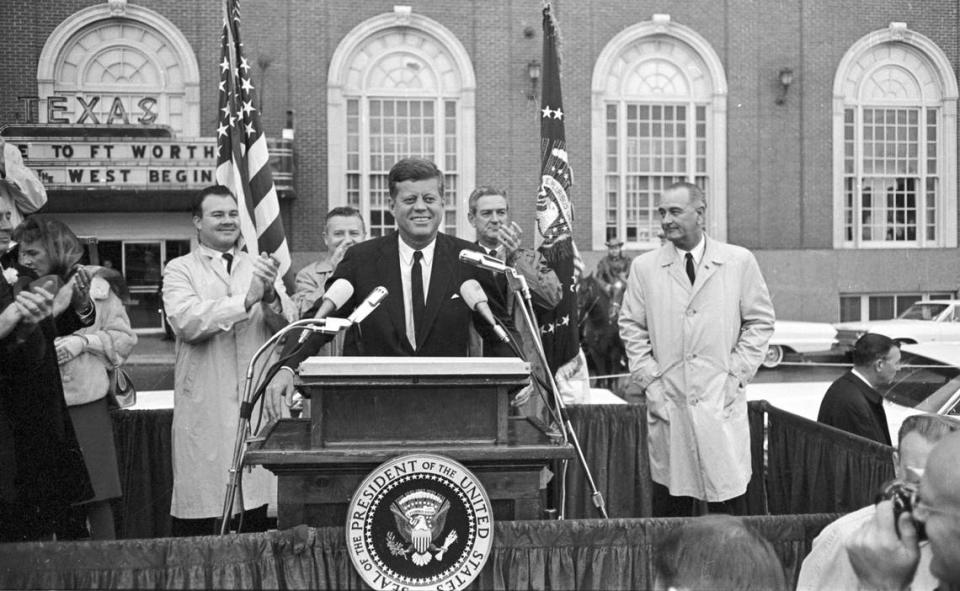
Kennedy, who had visited Fort Worth earlier in the day, was riding in a downtown Dallas motorcade that slowly made its way down Elm Street in Dealey Plaza a little after noon. Seconds later, shots rang out from a window on the sixth floor of the Texas School Depository Building. The assassin, Lee Harvey Oswald, used an Italian Carcano M91/38 bolt-action rifle, equipped with a 4x Hollywood brand scope.
For Payne, a young journalist for the Dallas newspaper, the day started without much pomp. Arriving in the newsroom around 7:30 in the morning, he found out he was the “rewrite man” for a story on first lady Jackie Kennedy. He would be picking up items from reporters calling in their notes on what they were seeing on the ground. His job: Turn those bits of observations into an interesting tale of the first lady in North Texas.
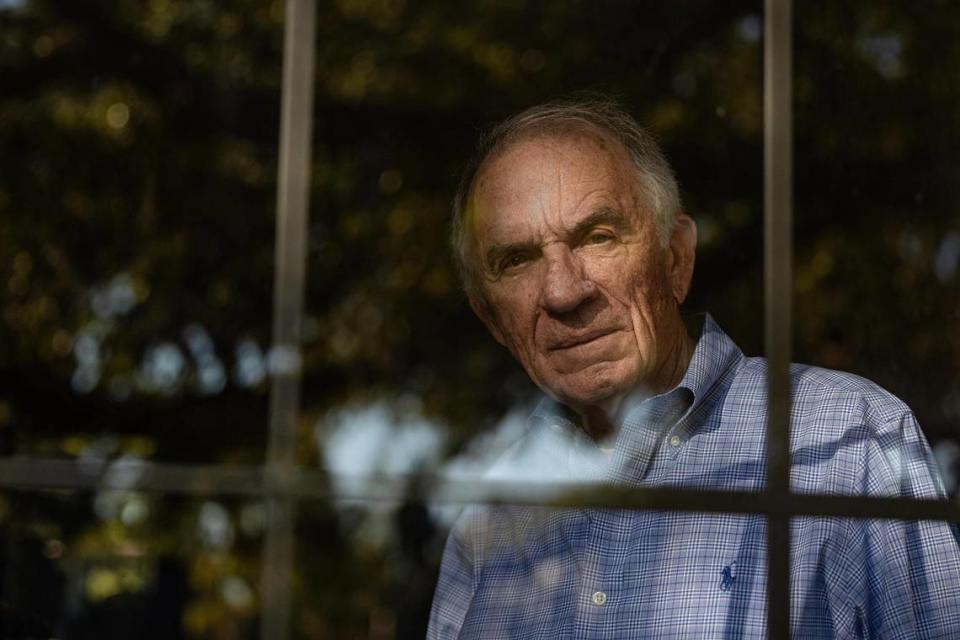
Air Force One landed in Dallas around 11:40 a.m. and Payne was busy working on his feature as the president’s motorcade made its way through the city.
Out of the corner of one eye, Payne recalls seeing an editor answering the phone. A stunned look.
The news? The president had been shot.
“We heard the city editor say, ‘He’s been hit! There’s been shots fired!’” Payne said. “Nobody knew for sure exactly what was happening.”
For reporters in North Texas working that day, the weekend of coverage defined their careers. Simply put, it was “The Story” — the piece of journalism that was always brought up in passing conversation. To this day.
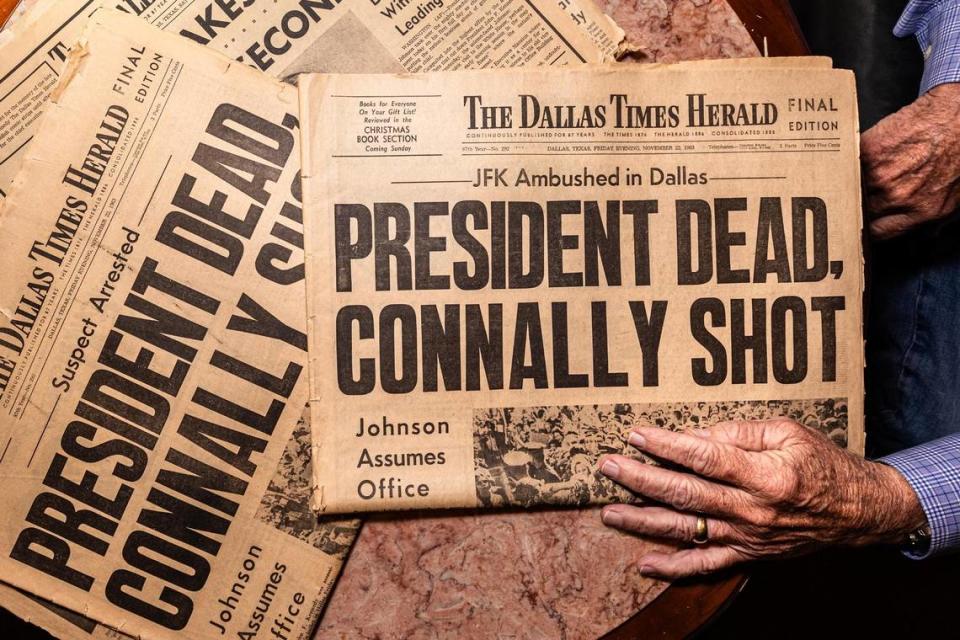
[MORE: See newspaper front pages before & after JFK's death]
That rang true for Payne, who recently wrote a book titled, “Behind the Scenes: Covering the JFK Assassination.” Payne shares his recollections of the day that changed his life, and one that millions will remember.
Payne recalls his brush with Abraham Zapruder, a dressmaker who loved Kennedy. The 26-year-old reporter had rushed out to the triple underpass near Dealey Plaza to figure out what was going on. There he spoke with Zapruder, who had captured the assassination with his 8 mm camera. The silent color film riveted the Warren Commission, the investigative body appointed by President Lyndon B. Johnson to get to the bottom of the assassination. Documentary filmmaker Errol Morris told the Smithsonian Magazine in 2013 that the Zapruder film is the most famous 26-second clip in film history — 486 frames shot from a Bell & Howell Zoomatic Director Series Model 414 PD.
After interviewing Zapruder, Payne walked up the stairs at the nearby Texas School Book Depository Building, gaining access to the sixth floor. There he stood on the spot where Oswald fired the fatal series of shots. By day’s end, Payne was at Oswald’s rooming house talking to neighbors, peeling off layers of the man’s life.
IT ALL STARTED IN FORT WORTH
The president’s North Texas agenda saw him fly into Fort Worth’s Carswell Air Force Base on the night of Thursday, Nov. 21. The amber lights framing downtown buildings for Christmas were turned on especially so the dignitaries would see the skyline from the air. Enthusiastic crowds were waiting at Carswell to greet the president and first lady.
The Kennedys slept at the downtown Hotel Texas, now the Hilton Fort Worth. Early the next morning, the president cheerfully greeted an estimated 5,000 supporters waiting in the rain in the hotel’s front parking lot, before heading back inside for a Chamber of Commerce breakfast attended by 3,000.
[MORE: Then vs. now photos of JFK in Fort Worth]
Star-Telegram reporter Roger Summers drew the assignment that day to hear the youthful president speak, describing the warm embrace the Democrat received from the Fort Worth crowd.
“That morning had been a great time of, you almost say, celebration,” said Summers, now 88 years old. “It was sort of family day where mothers and fathers took their kids down to try and see the president.”
The Star-Telegram’s evening edition, sent to presses before the news of the assassination, carried a banner headline about Kennedy’s chamber speech on a big military contract in Fort Worth.
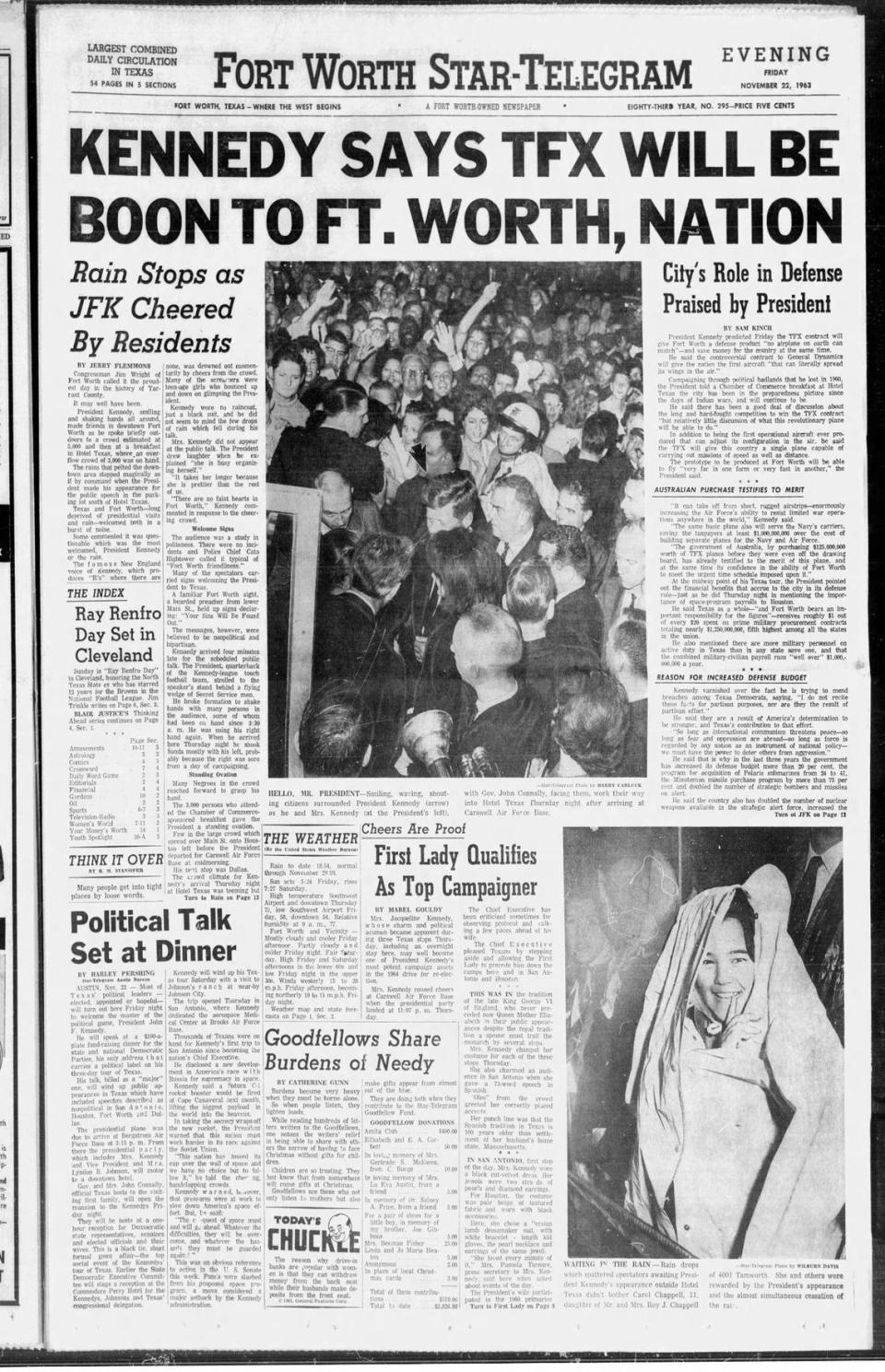
After the chamber speech, it was back to Carswell for the president and a short hop east to Dallas Love Field.
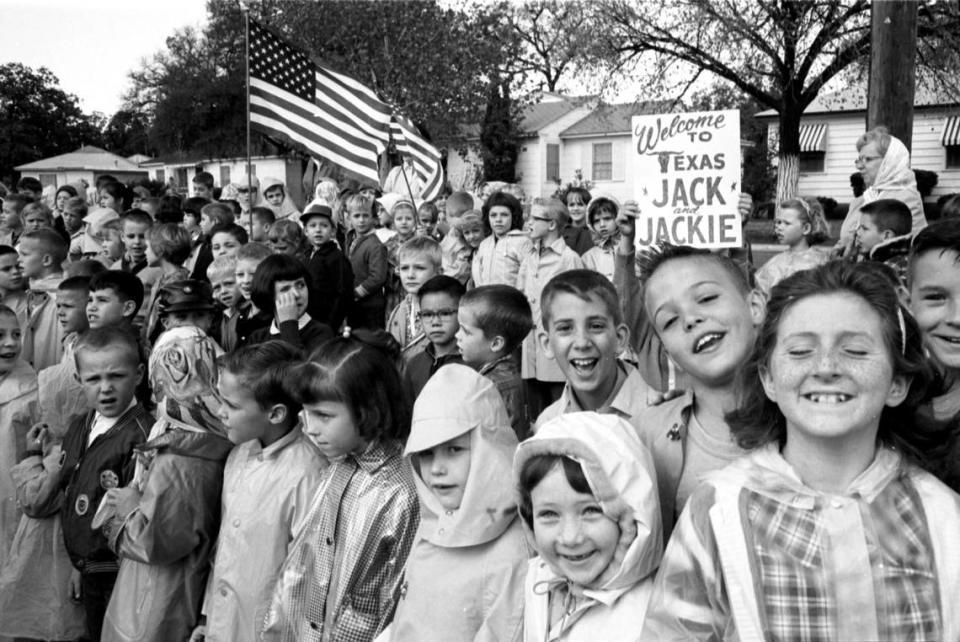
Having completed what seemed like a routine assignment, Summers switched gears, finding his way back to the Tarrant County Courthouse. On his way in, he stopped by the sheriff’s dispatch desk to see if there was any news.
A dispatcher relayed the news: The president has been shot.
All the joy from the morning was sucked out of him. He hopped in his car and sped off in the direction of the Dallas police station.
“There was a heaviness that came over me,” Summers said. “We had this happy event in Fort Worth and then sad event in Dallas.”
THE SHOTS HEARD AROUND THE WORLD
While most Americans could recall where they were when they learned of Kennedy’s death, one Star-Telegram reporter was asleep.
Bob Schieffer stayed up late Thursday night. The 26-year-old — who would go on a few years later to an illustrious career at CBS News — was not part of any of the coverage plans for Kennedy’s Texas visit. The Star-Telegram’s politics team was in charge. As the night police reporter, Schieffer was working his normal 6 p.m. to 2 a.m. shift.
Then Schieffer’s younger brother roused him from a deep sleep to tell him the president had been shot. His response was total disbelief. He quickly got dressed, threw on a snap brim hat, and had just pulled into the newspaper’s parking lot when the news came in over the radio. Kennedy was dead.
“I just kind of lost it right there,” said Schieffer, now 86.
After gathering himself, Schieffer went into the Star-Telegram office, which he described as total bedlam.
Every phone was ringing. People were running around, and most of the staff were in Dallas or on their way. Schieffer found his chair, picked up the phone and began fielding calls.
Then, the ring of a lifetime.
A caller asked if someone at the Star-Telegram could drive her from Fort Worth to Dallas. Perplexed by the odd request at a time like this, Schieffer asked the caller if she knew the president was dead.
Yes, she said. The voice over the phone identified herself as Marguerite Oswald, mother of one Lee Harvey.
“She said, ‘Yes, I heard it on the radio. I think my son is the one that’s arrested,’” Schieffer recalls.
He bolted into action, taking down Oswald’s west Fort Worth address and telling her someone would be there shortly.
Schieffer didn’t want to drive his two-seat sports car to Dallas, so he turned to automotive editor Bill Foster for a ride. Local car dealers loaned Foster a vehicle to drive and review for the Sunday paper; at the time, he was driving a Cadillac sedan.
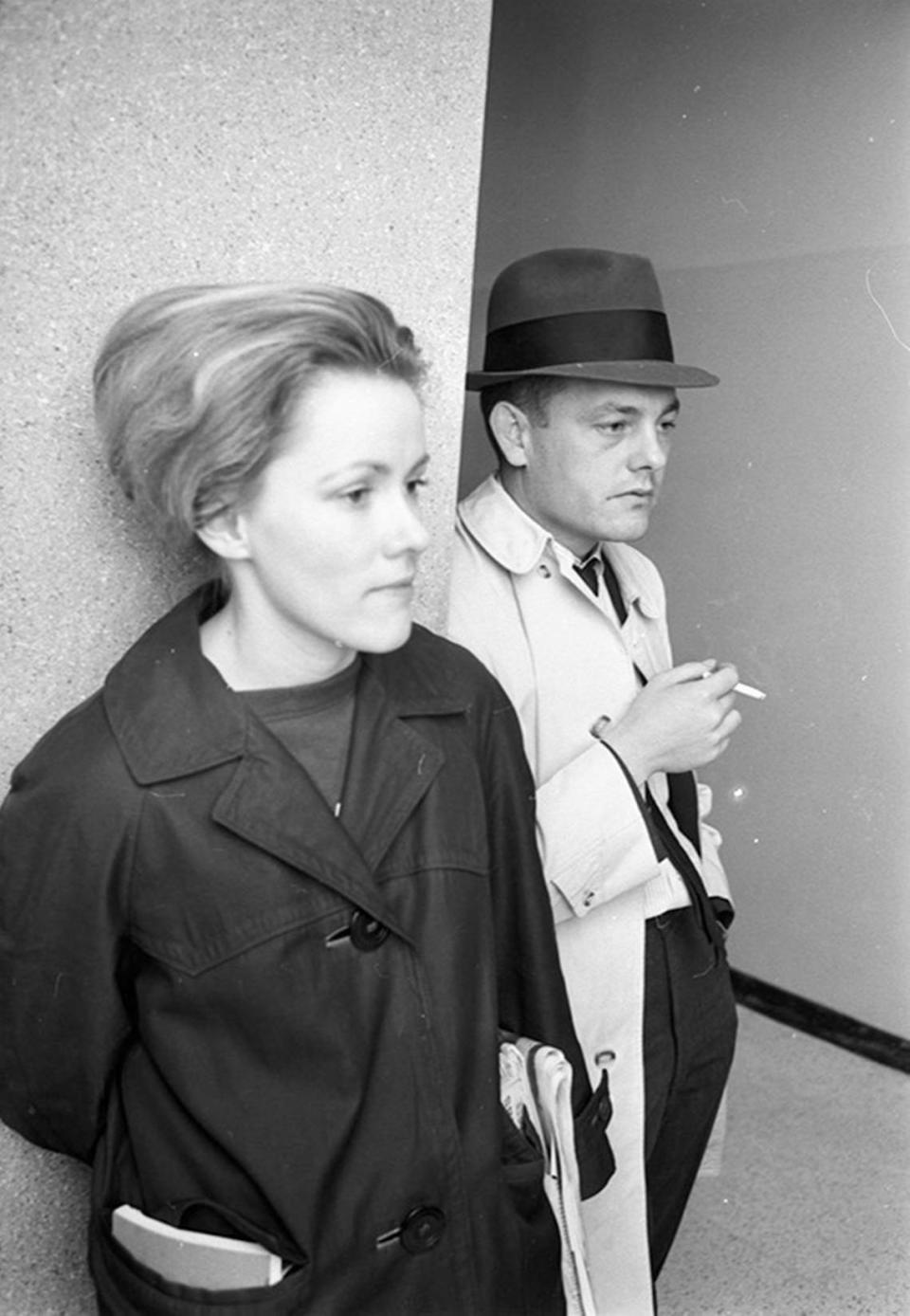
As Foster drove, Schieffer sat in the back interviewing Oswald who showed little to no empathy for what her son did.
Oswald never asked about Kennedy’s family, instead she kept repeating that everyone is going to turn on her and feel sorry for Lee Harvey’s wife rather than his mother, Schieffer said.
“I thought, ‘Oh, my God, what?’,” Schieffer said. “She was so erratic and everything and she said some other things ... but I didn’t even put them in the story.”
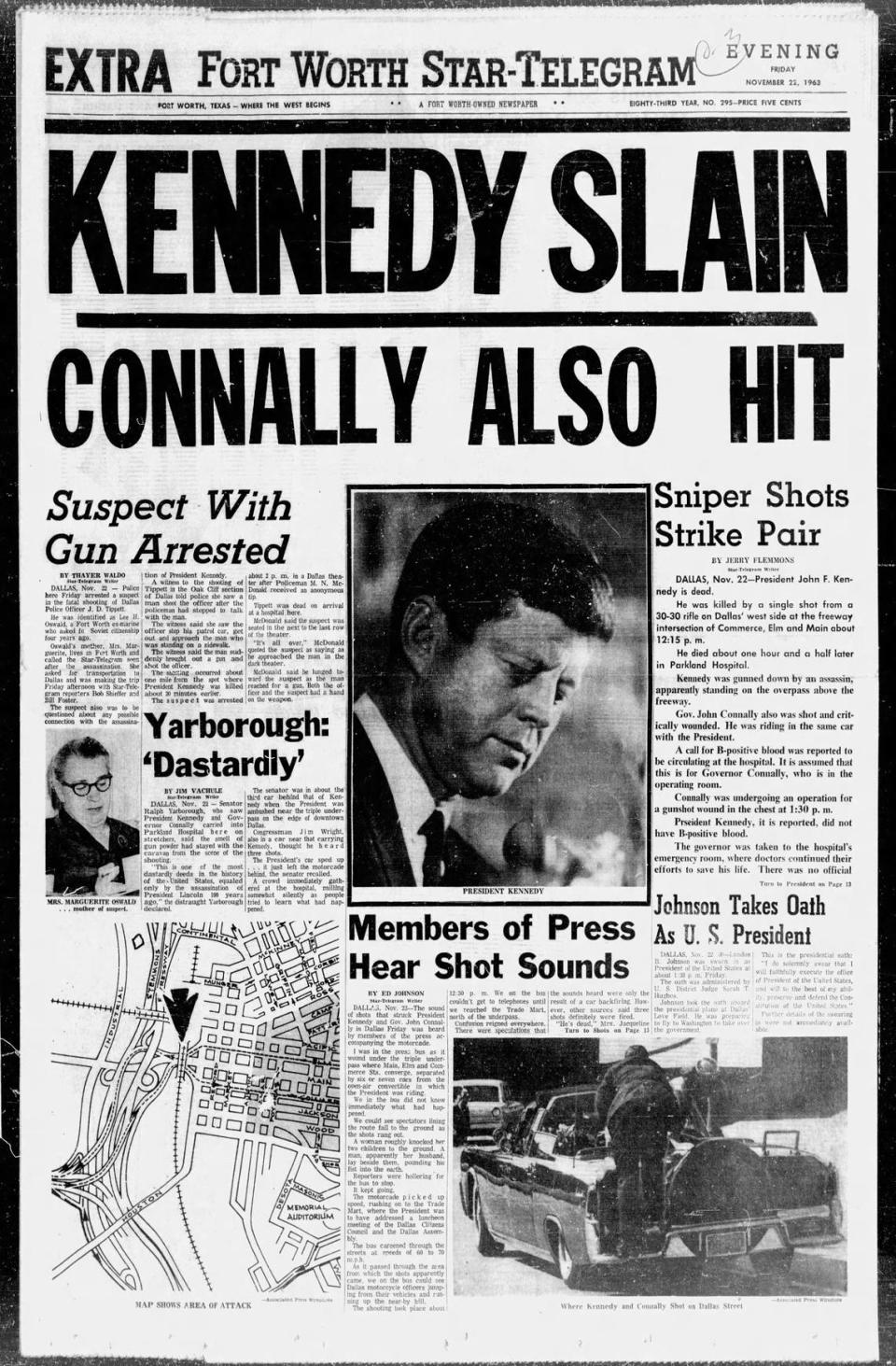
‘The Story’ still all these years later
The day started like any other, but quickly turned into the story of a lifetime. As the facts rolled in so did the magnitude of emotions.
“You knew how terrible it was, but you had important work to do,” Payne said. “You had to control yourself to get in there and ask questions and find out specifically what had happened.”
As the three journalists reflect on their experiences, they say the JFK assassination is a career-defining momen.
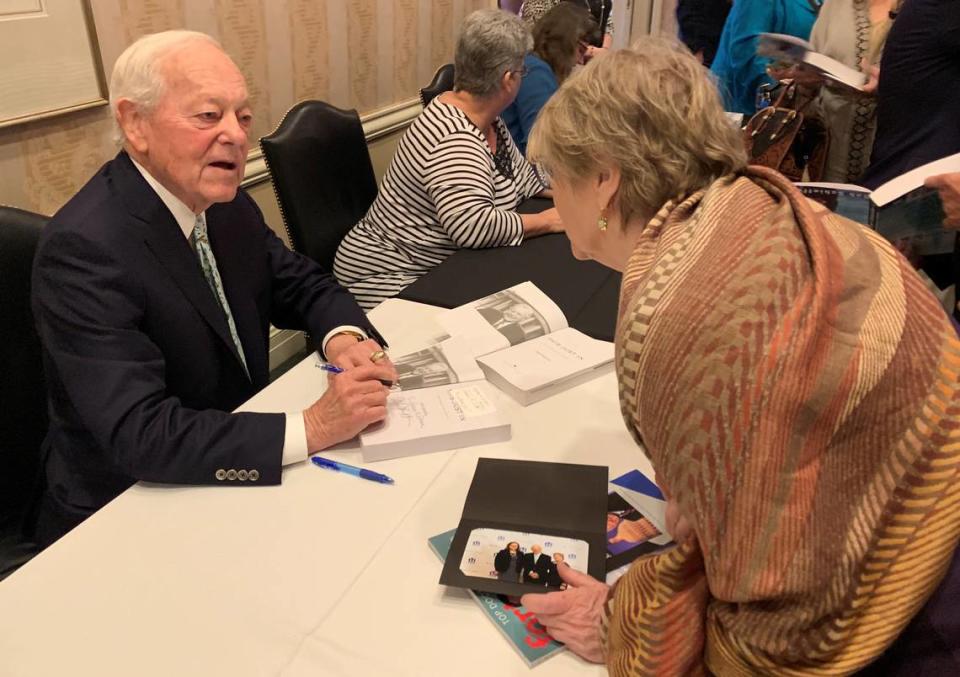
Payne went on to teach at Southern Methodist University. Summers put in over 40 years at the Star-Telegram, and Schieffer was a regular CBS News anchor and political reporter for decades, covering the White House, Pentagon, Congress and the State Department.
Every journalist has their own version of “The Story.” The one they never forget.
“I mean, we got past it, but I’m not sure we ever really got over it,” Schieffer said. “But we’re all still here.”
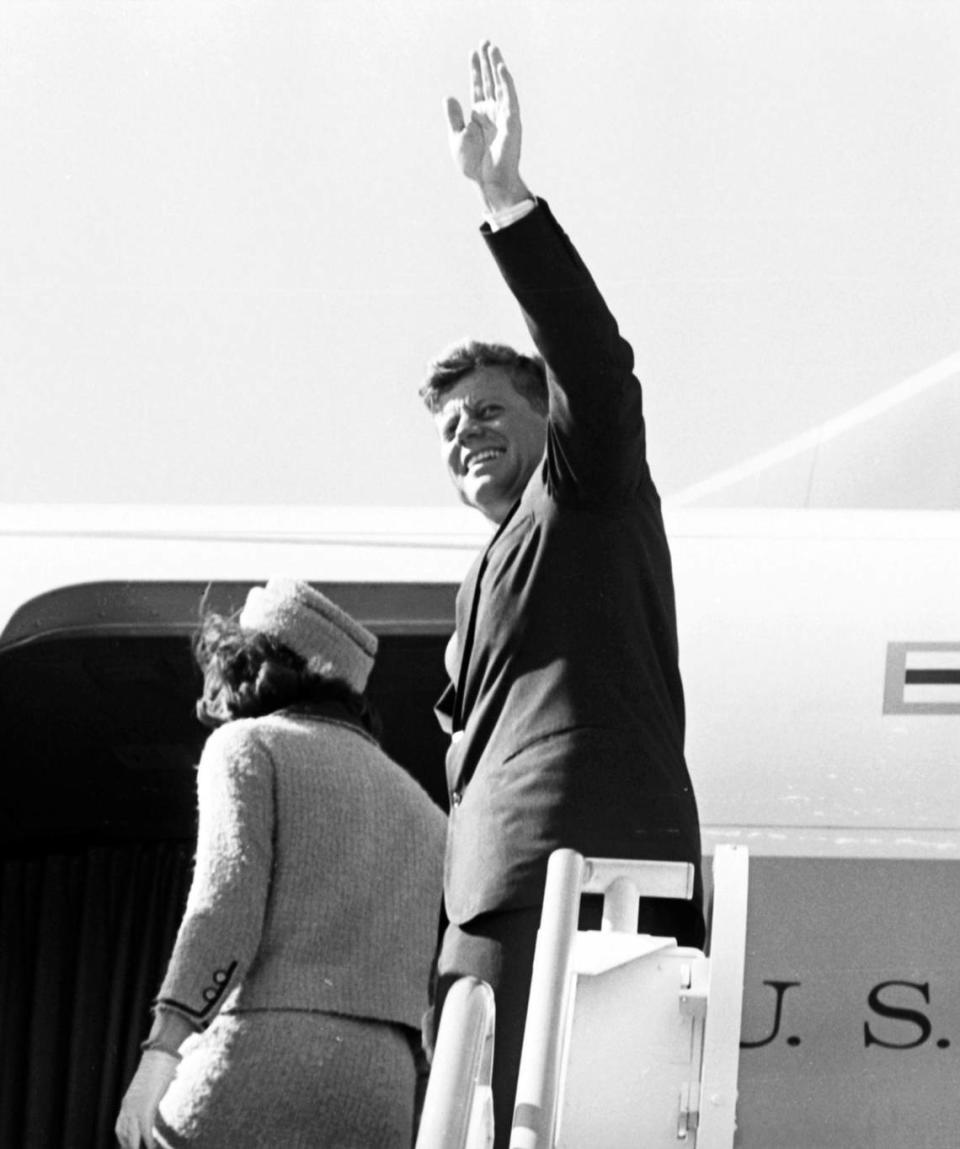
[MORE: Then vs. now photos of JFK in Fort Worth]
Today's top stories:
→ In killing plot from jail, Fort Worth Crips gangster sentenced to life
→ Dallas police officer shot while serving warrant
→ Bell offers voluntary separation to some Fort Worth workers
🚨Get free alerts when news breaks.


